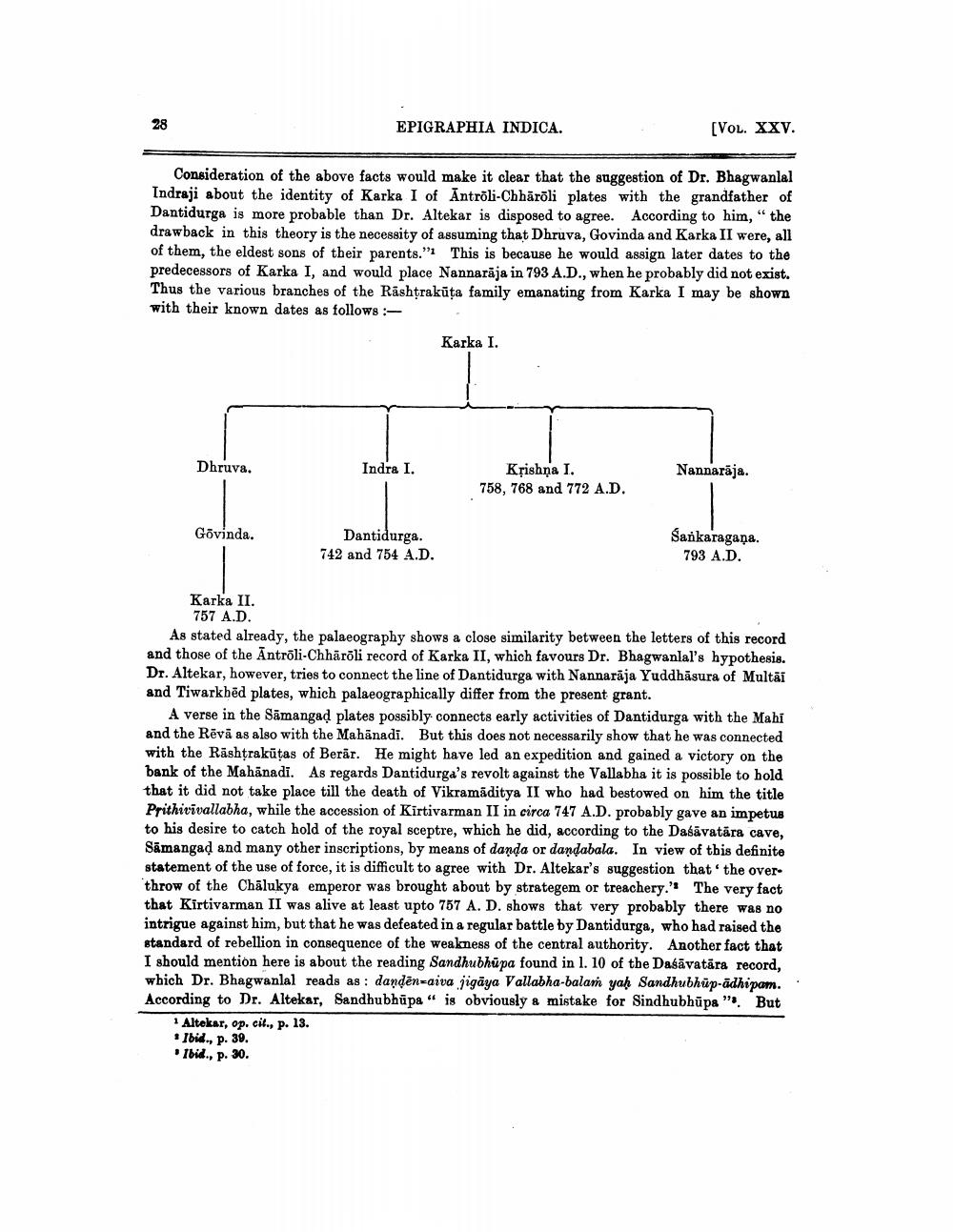________________
28
EPIGRAPHIA INDICA.
(VOL. XXV.
Consideration of the above facts would make it clear that the suggestion of Dr. Bhagwanlal Indraji about the identity of Karka I of Antrõli-Chhärõli plates with the grandfather of Dantidurga is more probable than Dr. Altekar is disposed to agree. According to him," the drawback in this theory is the necessity of assuming that Dhruva, Govinda and Karka II were, all of them, the eldest sons of their parents." This is because he would assign later dates to the predecessors of Karka I, and would place Nannaraja in 793 A.D., when he probably did not exist. Thus the various branches of the Rashtrakūta family emanating from Karka I may be shown with their known dates as follows:
Karka I.
Dhruva.
Indra I.
Nannarāja.
Kțishna I. 758, 768 and 772 A.D.
Govinda.
Dantidurga. 742 and 754 A.D.
Sankaragana. 793 A.D.
Karka II.
757 A.D. As stated already, the palaeography shows a close similarity between the letters of this record and those of the Antröli-Chhäröli record of Karka II, which favours Dr. Bhagwanlal's hypothesis. Dr. Altekar, however, tries to connect the line of Dantidurga with Nannarāja Yuddhăsura of Multāi and Tiwarkhed plates, which palaeographically differ from the present grant.
A verse in the Sämangad plates possibly connects early activities of Dantidurga with the Mahi and the Rēvā as also with the Mahanadi. But this does not necessarily show that he was connected with the Rashtrakūtas of Berar. He might have led an expedition and gained a victory on the bank of the Mahanadi. As regards Dantidurga's revolt against the Vallabha it is possible to hold that it did not take place till the death of Vikramāditya II who had bestowed on him the title Prithivivallabha, while the accession of Kirtivarman II in circa 747 A.D. probably gave an impetus to his desire to catch hold of the royal sceptre, which he did, according to the Dasavatāra cave, Sāmangad and many other inscriptions, by means of danda or dandabala. In view of this definite statement of the use of force, it is difficult to agree with Dr. Altekar's suggestion that the overthrow of the Chalukya emperor was brought about by strategem or treachery." The very fact that Kirtivarman II was alive at least upto 757 A.D. shows that very probably there was no intrigue against him, but that he was defeated in a regular battle by Dantidurga, who had raised the standard of rebellion in consequence of the weakness of the central authority. Another fact that I should mention here is about the reading Sandhubhupa found in 1. 10 of the Dasavatara record, which Dr. Bhagwanlal reads as : danden=aiva jigāya Vallabha-balań yah Sandhubhüp-ādhipam. According to Dr. Altekar, Sandhubhūpa " is obviously a mistake for Sindhubhüpa " But
1 Altekar, op. cit., p. 13. • Ibid., p. 30. Ibid., p. 30.




